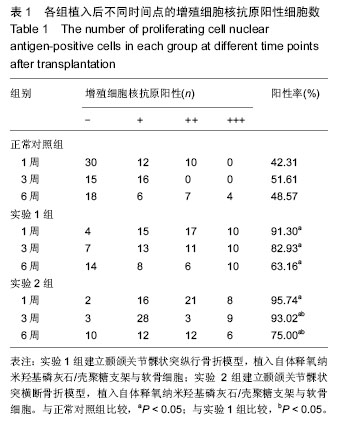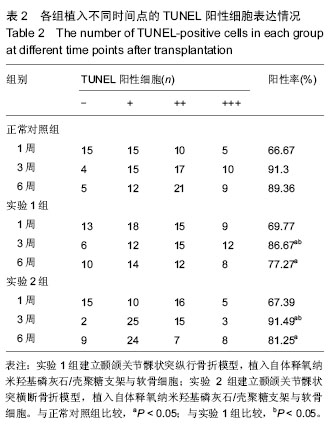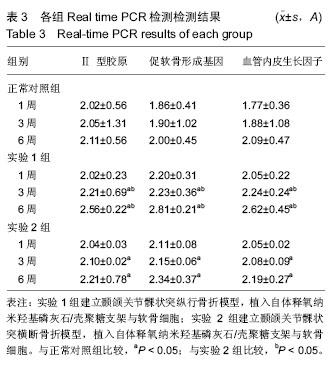| [1] 杨驰,何冬梅,陈敏洁,等.課突囊内骨折的临床特点和分类研究[J].中国口腔颌面外科杂志, 2010,8(3): 208-211.
[2] He D,Yang C,Chen M,et al.Intracapsular condylar fracture of the mandible:our classification and open treatment experience.J Oral Maxillofac Surg. 2009; 67(8):1672-1679.
[3] 徐婷.生物机械应力对下颌髁突适应性改建的影响[J].国际口腔医学杂志,2009,36(1):52-54.
[4] Uckan S,Bayram B,Kecik D,et al.Effects of titanium plate fixation on mandibular growth in a rabbit model.J Oral Maxillofac Surg.2009;67(2):318-322.
[5] 杨驰,何冬梅,陈敏洁,等.下颌骨課突囊内骨折的治疗探讨[J].中国口腔颂面外科杂志,2010,8(2):112-118.
[6] Kanayama H,Masuda Y,Adachi T,et al.Temporal alteration of chewing jaw movements after a reversible bite-raising in guinea pigs.Arch Oral Biol. 2010;55(1): 89-94.
[7] 李毅,王东.两种手术入路治疗下颂骨髁突中位骨折效果评价[J].武警后勤学院学报(医学版), 2012,21(3):193-195.
[8] Abdel-Galil K,Loukota R.Fractures of the mandibular condyle:evidence base and current concepts of management.Br J Oral Maxillofac Surg. 2010;48(7): 520-526.
[9] Nishiyama KK,Graeme M.Reproducibility of bone micro-architecture measurements in rodents by in vivo micro-computed tomography is maximized with three-dimensional image registration.J Bone. 2010;46: 155-161.
[10] Jiao K,Dai J,Wang MQ,et al.Age-and sex-related changes of mandibular condylar cartilage and subchondral bone:a histomorphometric and micro-CT study in rats.Arch Oral Biol.2010;55:155-163.
[11] 郭家平,李志进,董青山,等.125例縣突骨折临床回顾性研究?[J].临床口腔医学杂志,2011,27(9):540-541.
[12] Prasad S,Kuracina J,Edward A,et al.Altering occlusal vertical dimension provisionally with metal onlays:A clinic report.J Pros Dent. 2008;100(5): 338-342.
[13] Jiao K,Dai J,Wang MQ,et al.Subchondral bone loss following orthodontically induced cartilage degradation in the mandibular condyles of rats. J.Bone. 2010;9:10-16.
[14] Soares CJ,Castro CG,Neiva NA.Effect of gamma irradiation on ultimate tensile strength of enamel and dentin.J Dent Res.2010;89(2):159-164.
[15] Pegado RE,Do AF,Florio FM,et al.Effect of different bonding strategies on adhesion to deep and superficial permanent dentin.Eur J Dent.2010;4(2):110-117.
[16] Beloica M,Goracci C,Carvalho CA,et al.Microtensile vs microshear bond strength of all-in-one adhesives to unground enamel.J Adhes Dent. 2010;12(6): 427-433.
[17] Lin J,Shinya A,Gomi H,et al.Bonding of self-adhesive resin cements to enamel using different surface treatments:bond strength and etching pattern evaluations. Dent Mater.2010;29(4):425-432.
[18] Osorio R,Aguilera FS,Otero PR,et al.Primary dentin etching time,bond strength and ultra-structure characterization of dentin surfaces.J Dent. 2010;38(3): 222-231.
[19] Sauro S,Di Renzo S,Castagnola R,et al.Comparison between water and ethanol wet bonding of resin composite to root canal dentin.Am J Dent. 2011;24(1): 25-30.
[20] Zhao SJ,Zhang L,Tang LH,et al.Nanoleakage and microtensile bond strength at the adhesive-dentin interface after different etching times.Am J Dent. 2010;23(6):335-340.
[21] Vinay S,Shivanna V.Comparative evaluation of microleakage of fifth,sixth,and seventh generation dentin bonding agents:An in vitro study.J Conserv Dent.2010;13(3):136-140.
[22] Hamouda IM,Samra NR,Badawi MF.Microtensile bond strength of etch and rinse versus self-etch adhesive systems.J Mech Behav Biomed Mater. 2011;4(3): 461-466.
[23] Albaladejo A,Osorio R,Toledano M,et al.Hybrid layers of etch-and-rinse versus self-etching adhesive systems.Med Oral Patol Oral Cir Bucal. 2010;15(1): 112-118.
[24] Zanatta FB,Pinto TM,Kantorski KZ,et al.Plaque, gingival bleeding and calculus formation after supragingival scaling with and without polishing:a randomised clinical trial.Oral Health Prev Dent. 2011; 9(3):275-280.
[25] Leung CC,Palomo L,Griffith R,et al.Accuracy and reliability ofone-beam computed tomography for measuring alveolar bone height and detecting bony dehiscences and fenestrations.Am J Orthod Dentofacial Orthop.2010;137(4):109-119.
[26] Kassab MM,Badaw i H,Dentino AR.Treatment of gingival Recession.Dent Clin North Am. 2010;54(1): 129-140.
[27] Lei WY,Rabie AB,Wong RW.Repair of a defect following the removal of an impacted maxillary canine by orthodontic tooth movement:a case report.Cases J.2010;3(2):62-69.
[28] Liu D,Zhou Y,Li C,et al.Denaturing gradient gel electrophoresis analysis with different primers of subgingival bacterial communities under mechanical debridement.Microbiol Immunol.2010;54(11):702-706.
[29] Tetradis S,Anstey P,Graff-Radford S.Cone beam computed tomography in the diagnosis of dental disease.J Calif Dent Assoc.2010;38(1):27-32.
[30] Viotti RG,Kasaz A,Pena CE,et al.Microtensile bond strength of new self-adhesive luting agents and conventional multistep systems.J Prosthet Dent.2009; 102(5):306-312.
[31] Levin L,Einy S,Zigdon H,et al.Guidelines for periodontal care and follow-up during orthodontic treatment in adolescents and young adults.J Appl Oral Sci.2012;20(4):399-403.
[32] Boyer S,Fontanel F,Danan M,et al.Severe periodontitis and orthodontics:evaluation of long-term results.Int Orthod.2011;9(3):259-273.
[33] Shrout PE,Fleiss JL.Intraclass correlations:uses in assessing rater reliability.Psychol Bull. 1979;86(2): 420-428.
[34] Shoreibah EA,Ibrahim SA,Attia MS,et al.Clinical and radiographic evaluation of bone grafting in corticotomy-facilitated orthodontics in adults.J Int Acad Periodontol.2012;14(4):105-113.
[35] Corbacho de Melo MM,Cardoso MG,Faber J,et al.Risk factors for periodontal changes in adult patients with banded second molars during orthodontic treatment. Angle Orthod.2012;82(2):224-228.
[36] Fung K,Chandhoke TK,Uribe F,et al.Periodontal regeneration and orthodontic intrusion of a pathologically migrated central incisor adjacent to an infrabony defect.J Clin Orthod.2012;46(7):417-423.
[37] Zhang J,Zhou S,Li R,et al.Magnetic bead-based salivary peptidome profiling for periodontal-orthodontic treatment.Proteome Sci.2012;10(1):63.
[38] Viecilli RF,Budiman A,Burstone CJ.Axes of resistance for tooth movement:does the center of resistance exist in 3-dimensional space?Am J Orthod Dentofacial Orthop.2013;143(2):163-172.
[39] Graber LW,Vanarsdall RL,Vig WL,et al. Orthodontics: current principles and techniques.5th ed.St Louis: Elsevier Mosby, 2012:807-841.
[40] Yonenaga K,Nishizawa S,Fujihara Y,et al.The optimal conditions of chondrocyte isolation and its seeding in the preparation for cartilage tissue engineering. Tissue Eng Part C Methods.2010;16(6):1461-1469.
[41] Ciocca L,Tarsitano A,Marchetti C,et al.A CAD-CAM- prototyped temporomandibular condyle connected to a bony plate to support a free fibula flap in patients undergoing mandiblectomy: A pilot study with 5 years of follow up.J Craniomaxillofac Surg.2016.pii: S1010-5182(16)30039-7.
[42] Sharma D,Khasgiwala A,Maheshwari B,et al. Superolateral dislocation of an intact mandibular condyle into the temporal fossa: case report and literature review.Dent Traumatol.2016. doi:10.1111/edt.12282.[Epub ahead of print]
[43] Dimitriou D,Tsai TY,Park KK,et al.Weight-bearing condyle motion of the knee before and after cruciate-retaining TKA: In-vivo surgical transepicondylar axis and geometric center axis analyses.J Biomech. 2016.pii:S0021-9290 (16)30530-9. doi: 10.1016/j.jbiomech.2016.04.033. [Epub ahead of print]
[44] Xu L,Guo H,Li C,et al.A time-dependent degeneration manner of condyle in rat CFA-induced inflamed TMJ. Am J Transl Res. 2016;8(2):556-567.
[45] Zhao LL,Tong PJ,Xiao LW.Internal fixation with lag screws plus an anti-sliding plate for the treatment of Hoffa fracture of the lateral femoral condyle.Zhongguo Gu Shang.2016;29(3):266-269. |
.jpg)



.jpg)
.jpg)
.jpg)